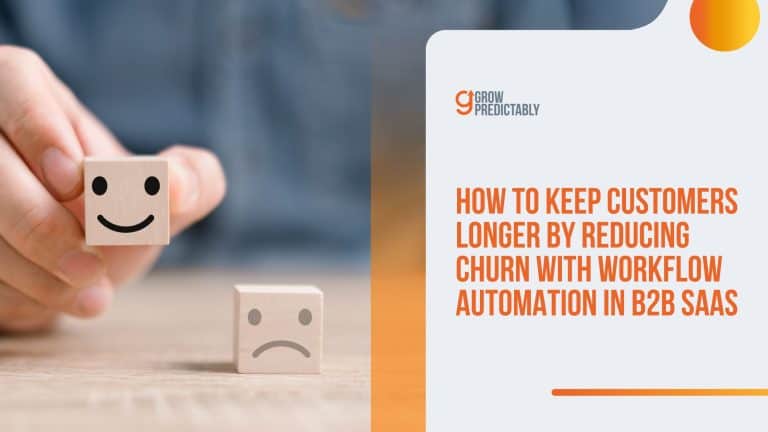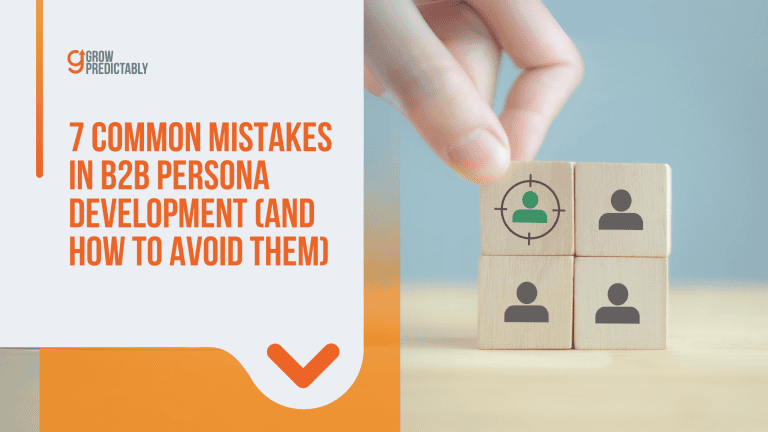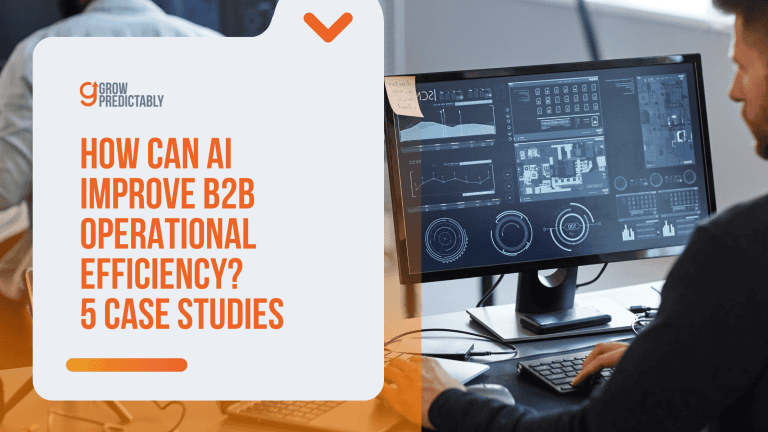21 Successful Micro SaaS Examples for 2025: Profitable & Inspiring
You’ve heard Micro SaaS is a great business model.
But does it actually work?
The truth: Profit margins for micro SaaS businesses hit 41% in 2024—outpacing larger SaaS companies.
With no-code tools and AI, solo founders are scaling to six figures without teams or VC funding.
How are they doing it?
We’ve got 21 micro SaaS examples of making real money this year.
Some of them started with just an idea.
Let’s break it down.
What is Micro SaaS?
Micro SaaS is a straightforward yet effective idea designed for specific market niches in the software-as-a-service world.
Unlike larger SaaS platforms that cater to broad groups, micro SaaS homes in on the distinct needs of a focused audience.
This means they can provide customized solutions to perfectly fit what their niche requires.

As a subscription-based model, micro SaaS typically doesn’t need a large staff to operate.
Instead, it often thrives with just one person or a small, nimble team at the helm.
This streamlined setup not only cuts down on expenses but also permits quick updates and changes, allowing the business to stay in tune with client needs efficiently.
Micro SaaS businesses are experts at zeroing in on smaller groups with precision and clarity.
This sharp focus enables them to run operations smoothly and effectively, often providing their niche markets with solutions that larger services can’t match as quickly.
The idea behind “Micro-SaaS” is all about using the fewest resources for the biggest impact possible.
The micro SaaS model offers accessibility, minimal resource requirements, and high profitability by targeting niche markets, making it an attractive option for entrepreneurs.
It reflects a core entrepreneurial spirit—fixing real problems without adding unnecessary layers.
In the fast-paced world of innovation, micro SaaS remains a beacon of smart, resourceful simplicity.
Benefits of Building a Micro SaaS Business

Building a micro SaaS business offers numerous advantages, particularly in scalability and profitability.
Founders enjoy the freedom to take charge of their business growth, tailoring it to their individual goals and market needs.
Here’s how micro SaaS stands out:
- Scalability and Profitability: Micro SaaS ventures provide founders with flexibility in scaling. This allows businesses to grow at a pace that aligns with their resources and market opportunities, maintaining profitability without overwhelming expenses. Thorough research and community support are crucial in developing a profitable micro SaaS business, ensuring the product’s success.
- Autonomy in Decision-Making: Entrepreneurs benefit from the ability to make quick and strategic decisions. This nimbleness helps address market changes and seize new opportunities efficiently.
- Specialized, Niche Solutions: Micro SaaS businesses deliver tailored software solutions by focusing on specific market needs. This specialization often translates into less competition and a stronger value proposition for niche audiences.
- Global Reach with Low Competition: Even with a small-scale operation, micro SaaS companies can access a global market, leveraging technology to reach customers worldwide. Focusing on niche solutions typically results in fewer competitors, offering a clearer path to market dominance.
How to Generate a Micro SaaS Idea
The genius of niches is they are too small for large competitors, allowing a nimble entrepreneur the breathing room to focus on an underserved audience.”
Rob Walling
Generating a micro SaaS idea starts with a deep dive into finding solutions for specific problems within niche markets.
The key is to identify an idea that caters to a distinct need, ensuring that your software will serve a real purpose for your target audience.
- Identify a Specific Problem or Need: Look for pain points or inefficiencies in a particular niche. Consider areas where existing solutions fall short or where a gap needs filling. This approach ensures your micro SaaS business is rooted in practicality and demand.
- Validate Through Customer Engagement and Market Demand: Directly engage with potential customers to gather insights and gauge interest. Use surveys, interviews, or even landing pages to test your idea. This step ensures that there is a genuine demand for your solution before you invest further.
- Evaluate Growth and Scalability Potential: Consider the long-term potential of your idea. Does it allow for expansion within the niche or into related areas? A micro SaaS with room for growth is more likely to sustain and increase profitability over time.
- Focus on a Specific Niche Market: Zero in on a particular niche to clearly define and locate your audience. Targeting specific market segments can make your marketing and development efforts more focused and effective.
- Brainstorm the Right Idea: Brainstorming is crucial to unlocking insights and sparking creativity. Generating and developing unique micro SaaS ideas tailored to niche markets is essential. Take the time to explore various angles, gather input from others, and think through different scenarios to refine your concept.
Choosing the right market is critical to the success of a micro SaaS venture.
A well-chosen niche not only lays the groundwork for initial traction but also paves the way for sustainable growth and differentiation from competitors.
Concentrate on the needs of your market, and your micro SaaS idea will have a higher chance of standing out and thriving.
Top 21 Micro SaaS Examples
You don’t need to have a 100–person company to develop that idea.”
Larry Page
Micro SaaS solutions deliver big value on a small scale by focusing intensely on very specific needs within targeted markets.
They’re nimble, and precise, and often solve problems that larger SaaS offerings overlook.
Here’s a detailed look at how these innovative micro SaaS software programs have found success and profitability:
AI & Automation
AI and automation tools streamline operations, reduce manual labor, and allow users to focus on what’s important.
They leverage advanced technology to enhance efficiency across a variety of tasks.
1. WriteSonic – AI-Powered Content Generation

WriteSonic has carved a niche in the content creation space by harnessing AI to automate writing processes.
This micro SaaS became prominent because of the increasing demand for high-volume, quality content driven by the rise of digital marketing.
- Background: As businesses sought to increase their online presence, the need for consistent and engaging content surged. WriteSonic emerged to meet this need, providing a tool to produce high-quality copy in minutes. WriteSonic also integrates with analytics platforms like Google Analytics to enhance data automation and tracking.
- Features: It offers a suite of writing functions, including article drafts, copy for ads, and product descriptions, all crafted with AI that learns and adapts to user preferences.
- Profitability: Profitability stems from addressing a critical bottleneck for marketers—the time and skill required to produce content. WriteSonic’s subscription model attracts small and larger businesses, ensuring consistent revenue.
- Why It Works as a Micro SaaS: By tackling a precise problem (content creation load) with targeted AI technology, it has become indispensable for marketers, blog writers, and small businesses trying to maintain a robust digital presence without expanding their teams.
2. Browse AI – Web Scraping Automation

Browse AI breaks down barriers to web scraping by eliminating the need for programming expertise, opening data extraction to non-technical users.
- Background: The need for data is universal across industries—from consumer insights to competitor analysis. Traditional web scraping required coding knowledge, limiting its accessibility.
- Features: With a simple, no-code setup, users can specify the data they need with point-and-click ease. It integrates with other tools to funnel data into existing business processes seamlessly.
- Profitability: Its ease of use and immediate applicability make it attractive to small businesses, researchers, and marketers who need quick, reliable data access without investing in technical infrastructure.
- Why It Works as a Micro SaaS: Browse AI’s focus on user accessibility and removal of technical hurdles enables it to capture a broad, underserved market, making it a sustainable and lucrative subscription-based service.
3. Bardeen – Automates Repetitive Browser Tasks

Bardeen is designed to automate tedious web-based tasks using AI, offering a personalized approach to boosting efficiency and productivity online.
- Background: With digital workflows becoming central to most workplaces, time spent on repetitive browser tasks can drain productivity. This tool automates these actions, allowing users to focus on higher-value tasks.
- Features: It includes automation for tasks like data entry, scheduled reports, and even syncing information between services, using automation built on user behavior and needs.
- Profitability: Bardeen appeals primarily to individual freelancers and small teams who are looking to reduce time spent on mundane tasks. Pricing structures are designed to be scalable, allowing users to upgrade as their needs and workflows expand.
- Why It Works as a Micro SaaS: By addressing universally experienced inefficiencies, Bardeen makes itself an essential part of its users’ productivity arsenals. The AI-driven and user-friendly approach ensures that its customer base remains engaged and grows with versatile use cases.
Productivity & Collaboration
These tools enhance organizational skills and foster better collaboration among team members, crucial for efficiency and effective project management.
4. Roam Research – A Note-Taking Tool for Networked Thought

Roam Research offers a revolutionary approach to note-taking, appealing particularly to academics, writers, and thought leaders.
- Background: Traditional linear note-taking apps fail to capture the dynamic nature of ideas that evolve and interconnect. Roam Research stands out by offering a non-linear approach that empowers users to synthesize and explore ideas freely.
- Features: It allows users to create interconnected networks of notes via bidirectional links, building a graph-like structure of information.
- Profitability: Its focus on a niche audience who values deep cognitive work and complex idea mapping enables Roam to command premium pricing. The loyalty of its user base is reflected in high subscription retention rates.
- Why It Works as a Micro SaaS: By catering dedicatedly to intellectual and academic groups seeking a tool that truly supports complex thinking processes, Roam ensures its relevance and profitability within its niche market.
5. Tweek – A Minimalist To-Do List and Calendar Tool

Tweek provides a distraction-free environment for managing personal and team tasks, hitting the sweet spot between simplicity and functionality.
- Background: In a world filled with overstuffed productivity tools, Tweek appeals to users who crave simplicity but still need efficient task organization.
- Features: It features a clear interface for task lists alongside calendar integration, enabling users to manage schedules without distraction.
- Profitability: By offering just enough features in a neat package, Tweek attracts users seeking both personal and professional organization solutions, supporting a loyal customer base through subscription services.
- Why It Works as a Micro SaaS: Tweek’s minimalistic approach differentiates it from bloated productivity offerings, making it a go-to for those looking to declutter their digital lives. It retains its customer base by continuously delivering what its users value most—simplicity and efficiency.
6. Hiver – Shared Inbox for Gmail

Hiver reshapes Gmail into a collaborative workspace, providing seamless team communication and task management directly within the inbox.
- Background: Most businesses rely heavily on email, but coordinating team efforts through email can become chaotic. Hiver addresses this need by transforming Gmail into a collaborative space. It aids small business owners by providing tailored tools and services that enhance efficiency and workflow management.
- Features: Facilitates task assignment, tracking, and collaboration with features like email notes and status tags, all while staying within Gmail.
- Profitability: It enhances an existing tool that users are already comfortable with, minimizing the learning curve while delivering immediate value. This familiarity helps drive adoption and retention, making it a profitable addition to core team operations.
- Why It Works as a Micro SaaS: By aligning itself with Gmail, Hiver captures a vast potential user base and provides enhancements without the friction of introducing a brand-new platform. This familiar groundwork allows it to achieve widespread adoption and sustainable profitability.
E-commerce & Marketing
E-commerce and marketing today require dynamic tools that can enhance user engagement, streamline functions, and ultimately drive sales.
These micro SaaS products meet those needs by focusing on small but impactful changes that enhance customer interactions.
7. Fomo – Social Proof Notifications to Boost Conversions

Fomo leverages the power of social proof to increase conversions on e-commerce sites.
By displaying real-time user interactions on a website, it uses behavioral psychology to create a sense of urgency and trust among potential buyers.
- Background: Social proof is a powerful motivator in consumer decision-making. Fomo taps into this by showing live user actions, such as purchases or sign-ups, which others can quickly follow.
- Features: Provides customizable notifications tailored to fit any website’s design, ensuring seamless integration. Additionally, the platform offers parallel conversion, allowing users to convert multiple web pages simultaneously, enhancing the overall efficiency of the conversion process.
- Profitability: This tool’s ability to meaningfully increase conversion rates makes it invaluable for online retailers, translating into consistent demand and a solid subscription model.
- Why It Works as a Micro SaaS: Fomo focuses specifically on increasing conversion through social proof, a highly effective niche strategy. Its ease of setup and tangible effects on sales performance make it a staple tool for digital marketers and business owners, ensuring steady customer retention.
8. Sniply – Adds Call-to-Action Buttons to Shared Links

Sniply enhances the utility of content sharing by allowing users to overlay custom call-to-action (CTA) buttons on any shared link, redirecting attention back to their brand or product.
- Background: Content curation and sharing are key strategies in digital marketing, but often the original content’s source stands to gain more than the sharer. Sniply helps balance this by keeping engagement directed toward the brand sharing the content.
- Features: Users can customize CTAs to blend naturally with the shared content and track the effectiveness through detailed analytics.
- Profitability: It offers a unique value by combining content sharing with lead generation, attracting marketers and brands eager to optimize their social media and content marketing strategies.
- Why It Works as a Micro SaaS: By offering marketers a tool to leverage existing content for lead generation, Sniply fills a niche role efficiently. Its subscription service is supported by businesses keen to maximize their outreach efforts without needing to create new content constantly, ensuring lasting demand.
9. Gumroad – Enables Creators to Sell Digital Products Easily

Gumroad simplifies the process for creators to market and sell digital products, from ebooks and courses to music and art, providing the infrastructure for transactions without hassles.
- Background: As the creator economy burgeons, individuals require straightforward platforms where they can manage sales without needing e-commerce expertise.
- Features: Offers tools for payment processing, product hosting, and even customer email management, all designed with simplicity in mind.
- Profitability: It profits through transaction fees and premium plan subscriptions, ensuring revenue aligns with user success.
- Why It Works as a Micro SaaS: Gumroad’s focus on empowering individual creators with minimal overhead makes it an appealing option for those wishing to monetize their work directly. Its platform is essential for creators who prefer simplicity while accessing comprehensive sales tools, promoting sustained growth and profitability.
Finance & Payments
The management of finances and payments is a critical requirement for SaaS businesses, where streamlined operations can significantly impact growth and efficiency.
These micro SaaS products solve complex problems with efficient solutions tailor-made for digital commerce.
10. Paddle – Simplifies SaaS Payments and Tax Handling

Paddle acts as a full-stack revenue delivery platform, tackling the complexities of global payments for SaaS companies by managing billing, taxes, and compliance.
- Background: Expanding globally comes with challenges like international tax compliance and payment processing complexities. Paddle addresses these barriers, offering a one-stop solution that handles these intricacies.
- Features: Automates tasks such as subscription management, tax calculation, and compliance updates, reducing overhead for businesses.
- Profitability: Capitalizes on the pain points of SaaS businesses needing to sell overseas without the burden of severe compliance concerns, thus its comprehensive service packaging guarantees a recurring revenue stream.
- Why It Works as a Micro SaaS: Paddle solves a critical blocker for SaaS companies engaging globally, emphasizing ease over building in-house processes, making it the go-to for companies eager to simplify international transactions and focus on scaling.
11. ProfitWell – Subscription Analytics and Revenue Optimization

ProfitWell provides in-depth analytics on subscription services, helping businesses optimize revenue with metrics that reveal customer behavior and guide strategic changes.
Micro SaaS software like ProfitWell provides organizations with efficient tools for managing customer support and ensuring businesses remain synchronized with their customers.
- Background: As subscription models dominate the industry, understanding subscriber engagement and churn is vital for success. ProfitWell delivers insights directly linked to improving lifetime value and retention.
- Features: Offers tools for revenue recognition, subscription analytics, and churn reduction strategies, all aggregated in a simple dashboard.
- Profitability: Drives profit by helping businesses decrease churn and increase retention, a critical aspect for any subscription-based service.
- Why It Works as a Micro SaaS: By providing actionable data tailored to subscription businesses’ pain points, ProfitWell delivers undeniable value, cementing its place as a necessary tool for informed decision-making, hence sustaining a consistent client base.
12. Lemon Squeezy – Manages Digital Product Sales and Subscriptions

Lemon Squeezy assists businesses in selling digital products and managing customer subscriptions with ease, wrapping everything in a user-friendly platform.
- Background: The rise of digital commerce means businesses need reliable infrastructure to handle product distribution and subscription management efficiently.
- Features: Includes tools for handling billing, customer communication, and compliance within a streamlined interface designed for user-friendliness.
- Profitability: Its appeal lies in simplifying tasks associated with digital sales, attracting businesses aiming to scale quickly without hefty investment into specialized e-commerce solutions.
- Why It Works as a Micro SaaS: Lemon Squeezy effectively lowers the barrier for digital product sales, offering robust functionality with minimal hassle, which resonates well with startups and small businesses seeking simple yet powerful solutions to grow their operations.
SEO & Content
A robust SEO and content strategy is non-negotiable in the rapidly evolving digital landscape.
These micro SaaS software address specific aspects of SEO, helping businesses enhance visibility and drive more targeted traffic.
13. SurferSEO – AI-Powered SEO Content Optimization

SurferSEO provides a data-driven way to enhance web page performance, using AI to optimize content based on SEO best practices tailored to specific industry standards.
- Background: As competition for online visibility increases, the need for SEO-optimized content has skyrocketed. SurferSEO steps in to bridge the gap between keyword strategy and comprehensive content optimization.
- Features: Offers real-time data assessments, keyword recommendations, and content structure guidelines, making SEO practices easy to implement even for non-experts. Unlike traditional SaaS solutions, which are larger and more resource-intensive, SurferSEO exemplifies the agility and efficiency of micro SaaS by targeting niche markets with minimal resources.
- Profitability: By directly influencing search engine rankings and organic traffic, SurferSEO demonstrates clear ROI, appealing to marketing teams and content creators looking to improve their reach and engagement.
- Why It Works as a Micro SaaS: SurferSEO addresses a universal content need—SEO optimization—making it invaluable for businesses of all sizes. It’s effective because it streamlines a complex task into manageable steps, gaining steady revenue through subscription models designed for scalability.
14. Keyword Chef – Finds Low-Competition Keywords for Niche Sites

Keyword Chef specializes in identifying lesser-tapped keywords that give niche websites a competitive edge in search rankings, crucial for targeted SEO strategies.
- Background: In the age of saturated markets, finding keywords that aren’t heavily dominated is a game-changer for websites vying for visibility.
- Features: Generates comprehensive lists of low-competition keywords tailored to specific niches, providing insights that save time and enhance SEO strategies.
- Profitability: The tool simplifies the keyword research process, a vital task for SEO professionals and niche site owners who depend on organic visibility for growth.
- Why It Works as a Micro SaaS: Keyword Chef excels by solving a specific pain point—finding actionable, low-competition keywords—providing clear value and savings in both time and resources. Its precise focus creates a reliable source of income, serving a clearly defined audience with ongoing needs.
15. Link Whisper – AI-Powered Internal Linking for WordPress

Link Whisper automates the process of internal linking within WordPress, significantly improving site structure and, ultimately, enhancing SEO.
- Background: Manual linking is tedious yet crucial for SEO as it helps search engines understand site hierarchy and content relationships.
- Features: Utilizes AI to recommend and create smart internal links, increasing site engagement and improving crawlability with minimal effort.
- Profitability: By automating internal linking, Link Whisper saves significant time and boosts site performance, making it an attractive proposition for WordPress users intent on optimizing SEO.
- Why It Works as a Micro SaaS: Its laser focus on a specific aspect of SEO makes Link Whisper an excellent complement to broader SEO strategies. The ease of integration and visible benefits translate to strong client retention, ensuring profitability through ongoing subscriptions.
Developer & Tech Tools
As software development becomes hyper-specialized, developers are turning to tools that simplify complex tasks.
These micro SaaS offerings deliver highly targeted functionality to support efficient code development and deployment.
16. Cronhub – Simple Cron Job Monitoring for Developers

Cronhub makes it easier for developers to monitor and manage cron jobs, which are essential for automating repetitive tasks in software applications.
- Background: Managing cron jobs can be challenging, involving monitoring task completion and troubleshooting failures. Cronhub offers a straightforward solution to these routine yet critical tasks.
- Features: Provides real-time monitoring, error alerts, and performance metrics for cron jobs, reducing the risk of job failures and ensuring reliable automation.
- Profitability: Simplifying a fundamental aspect of software maintenance, Cronhub appeals to developers and IT teams, facilitating consistent subscription revenue due to ongoing monitoring needs.
- Why It Works as a Micro SaaS: By focusing narrowly on cron job efficiency, Cronhub delivers indispensable value. Its simplicity and reliability make it an essential tool for developers, ensuring steady demand and income.
17. Plasmic – No-Code UI Builder for React Apps

Plasmic empowers teams to build complex user interfaces for React applications without writing code, bridging the gap between design and development.
- Background: The need for agile development and rapid prototyping has skyrocketed, especially in dynamic fields where time-to-market is critical. Plasmic targets this need by enabling designers and developers to collaborate seamlessly.
- Features: Offers a visual interface for building React components, allowing non-technical team members to contribute directly to UI development.
- Profitability: By accelerating the design process and reducing the dependency on developers for UI modifications, Plasmic lowers development costs and increases flexibility, appealing to both startups and large organizations.
- Why It Works as a Micro SaaS: Its specific focus on no-code UI building for a popular framework like React fills a valuable gap in the market. Plasmic’s niche specialization ensures recurring revenue through its adaptable subscription models as companies continually refine and expand their digital projects.
18. Nango – Simplifies SaaS Integrations for Developers

Nango makes integrating various SaaS applications easier, tackling a notoriously complex and time-consuming aspect of software development.
- Background: Smooth integration across multiple micro SaaS products is imperative for creating comprehensive tech solutions, yet it traditionally involves considerable manual coding and configuration.
- Features: Provides a suite of tools for seamless API integration, reducing the headache of compatibility issues and complex code adjustments.
- Profitability: Its focus on reducing developmental overhead and error potential makes Nango highly appealing for developers needing reliable and fast integration capabilities.
- Why It Works as a Micro SaaS: Nango’s ultra-specific focus on easing the integration process means that it offers immediate, perceivable benefits to developers. This specialization secures its position in the market as a necessary tool for harnessing the full potential of SaaS ecosystems, ensuring sustainable, scalable profitability through its service offerings.
Healthcare & Wellness
With increasing awareness surrounding mental and physical health, there is a tremendous demand for tools that support personal well-being.
These successful micro SaaS product offerings bring innovative, user-friendly solutions to these essential aspects of life.
19. Cove – AI-Powered Mental Health Therapy Journaling

Cove uses artificial intelligence to enhance mental health therapy through guided journaling, aiding users in managing their emotional and mental well-being.
- Background: Journaling is a recognized therapeutic approach for mental health, allowing individuals to process thoughts and emotions. Cove automates this practice, offering personalized prompts and support through AI.
- Features: Delivers customized journaling prompts, tracks emotional trends, and offers insights based on user entries, aligning with therapeutic techniques.
- Profitability: By providing a discreet, self-driven method of mental health support, Cove appeals to users seeking accessible and affordable therapy options, establishing a steady revenue stream through subscription services.
- Why It Works as a Micro SaaS: Cove narrows in on self-led mental health care, which is growing in demand as awareness increases. Its use of AI to deliver personalized experiences differentiates it in the wellness sector, ensuring ongoing engagement and profitability.
20. SleepCycle – Tracks Sleep Patterns with Smart Alarms

SleepCycle aids users in understanding and improving their sleep quality by tracking sleep patterns and optimizing waking times with smart alarms.
- Background: Quality sleep is fundamental to overall health, but many struggle to get adequate rest. SleepCycle provides insights into sleep habits, helping users make informed adjustments to enhance sleep quality.
- Features: Monitors sleep through sound analysis or motion detection, uses data to detect sleep phases, and wakes users up during light sleep for a refreshed feel.
- Profitability: The value in enhancing sleep translates directly to improved daily performance, catering to anyone looking to optimize their health routine. This assurance secures continued user subscriptions and app purchases.
- Why It Works as a Micro SaaS: Focusing on a singular aspect of wellness—sleep—lets SleepCycle offer clear, actionable benefits. Its precision in making sleep data accessible and useful ensures it remains a trusted tool in the wellness market.
21. Nutrabot – AI-Powered Personalized Nutrition Coach

Nutrabot empowers users with tailored nutritional advice through AI, helping them achieve specific health and fitness goals.
- Background: Personalized nutrition is crucial as people become more aware of their unique dietary needs and health goals. Nutrabot serves this increasing demand with a digital solution offering expert-like guidance.
- Features: Provides meal suggestions based on user health data, dietary preferences, and fitness goals, adapting automatically as user habits and needs change.
- Profitability: With personalized plans that adapt to user progress, Nutrabot maintains engagement and perceived value, ensuring a stable revenue stream from health-conscious individuals keen on improving their diet.
- Why It Works as a Micro SaaS: Nutrabot’s capability to deliver flexible, adaptive nutritional insights makes it essential for users moving away from one-size-fits-all advice. Its ongoing adaptability ensures continuous value realization, facilitating user retention and recurring income.
Pricing Models for Micro SaaS Solutions
Micro SaaS businesses are generally easier to start and run than traditional software companies, and they often require less capital.”
Peter Graf
Establishing a well-thought-out pricing model is crucial for any successful micro SaaS product.
These models need to align with the product’s unique value proposition while catering to the target audience’s expectations and budget.
Small scale SaaS business models thrive with minimal resources and a limited user base, allowing them to generate profits while enjoying independence and lower risks.
Here are some strategies to consider for effectively pricing your micro SaaS solution.
Tailoring the Pricing Model to Your Product
There’s no universal formula for pricing a micro SaaS product, as the ideal strategy varies based on the product type and the market it addresses.
It’s essential to understand the specific needs your product fulfills and the inherent value it delivers to users.
- Product Differentiation: Identify what makes your product unique and valuable to customers. Use these insights to set a price that reflects perceived value without alienating potential users.
- Competitive Analysis: Examine pricing structures of similar tools within your niche. This helps establish a benchmark, ensuring that your pricing is both competitive and sustainable.
Offer a Free Trial
Offering a free trial can be an effective way to attract users and demonstrate the value of your product firsthand.
It lowers the entry barrier, allowing potential customers to experience the product’s benefits before committing financially.
- Trial Duration: Consider an optimal trial length that gives users sufficient time to explore and appreciate your tool, typically ranging from 7 to 30 days.
- Conversion Strategy: Use the trial period to nurture prospects. Engage them with onboarding support and educational content that highlights the product’s strengths and use cases.
Keep the Cost Low
A lower price point can help attract a more extensive user base, especially when targeting freelancers, small businesses, or individual users.
However, it’s essential to balance affordability with maintaining a perceived value.
- Entry-Level Pricing: Start with an affordable tier that provides essential features. This can serve as a stepping stone for users looking to transition to more comprehensive plans as their needs grow.
- Scaling with Value: Introduce higher-tier plans that provide additional features or capacity, allowing your pricing to scale as your users’ needs increase.
Consider Offering a Free Tier
A freemium model can broaden your reach and build a customer base by offering a basic version of your product for free.
This strategy can help in nurturing long-term customer relationships and encouraging upgrades.
- Feature Limitation: Offer essential features in the free tier, enticing users to experience the product’s core value. Keep advanced functionalities exclusive to premium tiers to drive upgrades.
- User Conversion: Analyze user behavior to identify opportunities for converting free users to paying customers by addressing their specific needs and demonstrating the value of upgraded features.
Align Pricing Strategy with Product Nature and Target Audience
A successful pricing model hinges on understanding how users perceive value relative to your product and tailoring the approach accordingly.
- Customer Segmentation: Define your target audience and understand their willingness to pay. Different segments might have varying value perceptions, so tailor the pricing model to suit different user profiles.
- Value Perception: Price your product in alignment with the value it delivers. Users are more likely to invest in tools that clearly demonstrate impact and importance in their daily operations.
Creating an effective pricing strategy for a micro SaaS solution involves understanding the market, your product’s unique value, and how your target audience perceives this value.
By employing strategic pricing models, offering trials, and considering freemium options, you can attract and retain customers, ensuring sustainable growth and profitability in the competitive SaaS landscape.
Building a Minimum Viable Product (MVP)
As you consider building your own minimum viable product, let this simple rule suffice: remove any feature, process, or effort that does not contribute directly to the learning you seek.”
Eric Ries
Once you’ve validated your micro SaaS business idea and explored potential pricing models, the next step is to build your Minimum Viable Product (MVP).
Creating an MVP is essential for testing your concept in a real-world environment, providing valuable insights into its feasibility and appeal.
Understand the Importance of an MVP
An MVP allows you to gauge whether your idea can function effectively as a live product and if it meets the needs of your target audience.
By starting with a simplified version of your solution, you can assess its core functionalities without investing excessive resources.
- Risk Mitigation: An MVP reduces the risk of building a full-scale product that lacks market interest, enabling you to refine or pivot based on user feedback.
- Cost Efficiency: Developing an MVP requires fewer resources, allowing you to allocate budget efficiently while learning critical lessons about product-market fit.
Identify the Problem and Evaluate Existing Solutions
Begin by pinpointing a specific issue that plagues small businesses, focusing on areas where existing solutions fall short or where gaps exist in the market.
Micro SaaS focuses on delivering subscription-based software services tailored to niche markets, addressing specialized problems with minimal resources.
- Market Research: Conduct thorough research to understand the landscape and identify opportunities for innovation. Look for inefficiencies or unmet needs that your product could address.
- Competitive Analysis: Evaluate current offerings, considering their strengths and weaknesses. Use this analysis to carve out a niche for your idea—one where you can offer enhanced value or unique features.
Idea Validation and Initial Product Development
Having defined your concept and its potential market, the next step is idea validation.
A successful micro SaaS business hinges on understanding the audience, engaging customers for feedback, and validating ideas through strategic market research.
This phase is crucial to confirming demand and refining your feature set to match user needs.
- Validation Techniques: Employ various validation strategies, such as surveys, interviews, or landing pages, to test interest and gather insights directly from potential customers.
- Core Features Selection: Focus on the essential functionalities that solve the primary problem. Ensure these features are seamlessly integrated and user-friendly, providing a robust user experience from day one.
Iterate and Refine Based on Feedback
Once your MVP is developed, launching it to a select group of early adopters can provide invaluable feedback.
Use this data to enhance your product continuously.
- User Feedback Analysis: Analyze feedback to understand user experiences, pinpointing areas for improvement or additional feature requests.
- Iterative Development: Adopt agile methodologies to refine your product iteratively, turning user input into actionable changes that enhance the overall solution.
An MVP is a pivotal step in proving the viability of a micro SaaS idea; it paves the way for full product development by offering tangible data on market needs and product effectiveness.
Through a deliberate focus on delivering critical functionality and learning from user interactions, an MVP ensures your product launches with a clear value proposition, alignment with user expectations, and potential for sustainable growth.
FAQs
Start Your Micro SaaS Today!
The data is clear: Micro SaaS is not just a passing trend—it’s restructuring the software industry.
AI-powered automation, demand for ultra-specific tools, and the growth of no-code platforms are fueling disruptive, bootstrapped businesses.
From AI-enhanced CRMs to productivity gamification, the possibilities are limitless.
This is an exciting time and a real opportunity to create something impactful.
Whether you’re a marketer, a consultant, or an industry specialist, you have valuable insights that can be turned into software.
The most successful micro SaaS founders in 2025 aren’t necessarily programmers—they’re problem-solvers.
Want to take action?
Explore SaaS founder communities on Twitter and LinkedIn, identify industry pain points, and experiment with no-code tools.
The more you research, the more precise your path will become.
Where do you see the biggest opportunities in Micro SaaS?
Are there gaps in your industry that technology could fix?
Let’s start a conversation!








